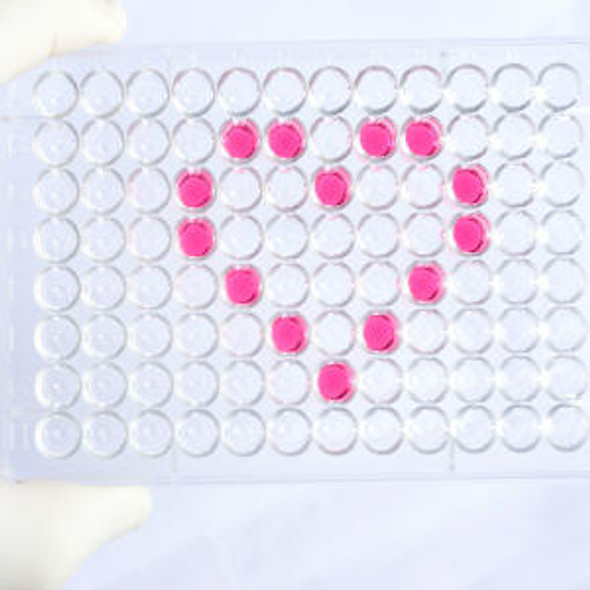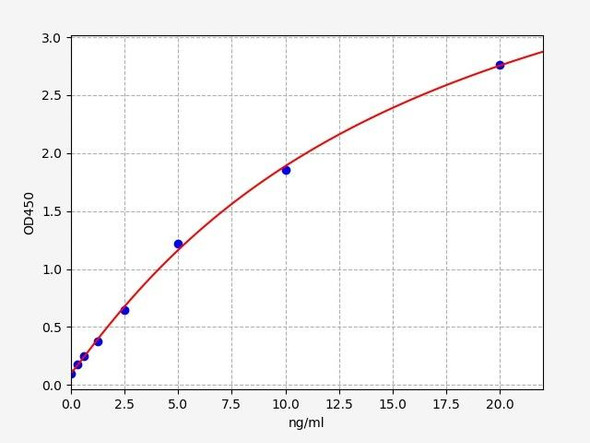Description
| Antibody Name: | TBX1 Antibody |
| Antibody SKU: | PACO01589 |
| Size: | 50ug |
| Host Species: | Rabbit |
| Tested Applications: | ELISA, WB, IHC, IF |
| Recommended Dilutions: | WB:1:500-1:2000, IHC:1:100-1:300, IF:1:200-1:1000 |
| Species Reactivity: | Human |
| Immunogen: | synthesized peptide derived from the C-terminal region of human TBX1. |
| Form: | Liquid |
| Storage Buffer: | Liquid in PBS containing 50% glycerol, 0.5% BSA and 0.02% sodium azide. |
| Purification Method: | The antibody was affinity-purified from rabbit antiserum by affinity-chromatography using epitope-specific immunogen. |
| Clonality: | Polyclonal |
| Isotype: | IgG |
| Conjugate: | Non-conjugated |
| Synonyms: | TBX1; T-box transcription factor TBX1; T-box protein 1; Testis-specific T-box protein |
| UniProt Protein Function: | TBX1: Probable transcriptional regulator involved in developmental processes. Is required for normal development of the pharyngeal arch arteries. Haploinsufficiency of the TBX1 gene is responsible for most of the physical malformations present in DiGeorge syndrome (DGS) and velocardiofacial syndrome (VCFS). DGS is characterized by the association of several malformations: hypoplastic thymus and parathyroid glands, congenital conotruncal cardiopathy, and a subtle but characteristic facial dysmorphology. VCFS is marked by the association of congenital conotruncal heart defects, cleft palate or velar insufficiency, facial dysmorpholgy and learning difficulties. It is now accepted that these two syndromes represent two forms of clinical expression of the same entity manifesting at different stages of life. Defects in TBX1 are a cause of DiGeorge syndrome (DGS). Defects in TBX1 are a cause of velocardiofacial syndrome (VCFS). Defects in TBX1 are a cause of conotruncal heart malformations (CTHM). CTHM consist of cardiac outflow tract defects, such as tetralogy of Fallot, pulmonary atresia, double-outlet right ventricle, truncus arteriosus communis, and aortic arch anomalies. 3 isoforms of the human protein are produced by alternative splicing. |
| UniProt Protein Details: | Protein type:DNA-binding; Transcription factor Chromosomal Location of Human Ortholog: 22q11.21 Cellular Component: nucleus Molecular Function:DNA binding; protein dimerization activity; protein homodimerization activity; sequence-specific DNA binding; transcription factor activity Biological Process: angiogenesis; anterior/posterior pattern formation; artery morphogenesis; blood vessel development; blood vessel morphogenesis; blood vessel remodeling; cell fate specification; cell proliferation; determination of left/right symmetry; ear morphogenesis; embryonic cranial skeleton morphogenesis; embryonic viscerocranium morphogenesis; epithelial cell differentiation; heart development; heart morphogenesis; inner ear morphogenesis; lymph vessel development; mesoderm development; middle ear morphogenesis; muscle cell fate commitment; muscle development; muscle morphogenesis; negative regulation of cell differentiation; neural crest cell migration; odontogenesis of dentine-containing teeth; outer ear morphogenesis; parathyroid gland development; pattern specification process; pharyngeal system development; positive regulation of cell proliferation; positive regulation of epithelial cell proliferation; positive regulation of MAPKKK cascade; positive regulation of mesenchymal cell proliferation; positive regulation of protein amino acid phosphorylation; positive regulation of transcription from RNA polymerase II promoter; positive regulation of transcription, DNA-dependent; regulation of transcription from RNA polymerase II promoter; retinoic acid receptor signaling pathway; semicircular canal morphogenesis; sensory perception of sound; social behavior; soft palate development; thymus development; thyroid gland development; tongue morphogenesis; transcription, DNA-dependent; vagus nerve morphogenesis Disease: Conotruncal Heart Malformations; Digeorge Syndrome; Tetralogy Of Fallot; Velocardiofacial Syndrome |
| NCBI Summary: | This gene is a member of a phylogenetically conserved family of genes that share a common DNA-binding domain, the T-box. T-box genes encode transcription factors involved in the regulation of developmental processes. This gene product shares 98% amino acid sequence identity with the mouse ortholog. DiGeorge syndrome (DGS)/velocardiofacial syndrome (VCFS), a common congenital disorder characterized by neural-crest-related developmental defects, has been associated with deletions of chromosome 22q11.2, where this gene has been mapped. Studies using mouse models of DiGeorge syndrome suggest a major role for this gene in the molecular etiology of DGS/VCFS. Several alternatively spliced transcript variants encoding different isoforms have been described for this gene. [provided by RefSeq, Jul 2008] |
| UniProt Code: | O43435 |
| NCBI GenInfo Identifier: | 6175055 |
| NCBI Gene ID: | 6899 |
| NCBI Accession: | O43435.1 |
| UniProt Secondary Accession: | O43435,O43436, Q96RJ2, C6G493, C6G494, |
| UniProt Related Accession: | O43435 |
| Molecular Weight: | 52,666 Da |
| NCBI Full Name: | T-box transcription factor TBX1 |
| NCBI Synonym Full Names: | T-box 1 |
| NCBI Official Symbol: | TBX1 |
| NCBI Official Synonym Symbols: | DGS; TGA; VCF; CAFS; CTHM; DGCR; DORV; VCFS; TBX1C; CATCH22 |
| NCBI Protein Information: | T-box transcription factor TBX1 |
| UniProt Protein Name: | T-box transcription factor TBX1 |
| UniProt Synonym Protein Names: | Testis-specific T-box protein |
| Protein Family: | T-box transcription factor |
| UniProt Gene Name: | TBX1 |
| UniProt Entry Name: | TBX1_HUMAN |






